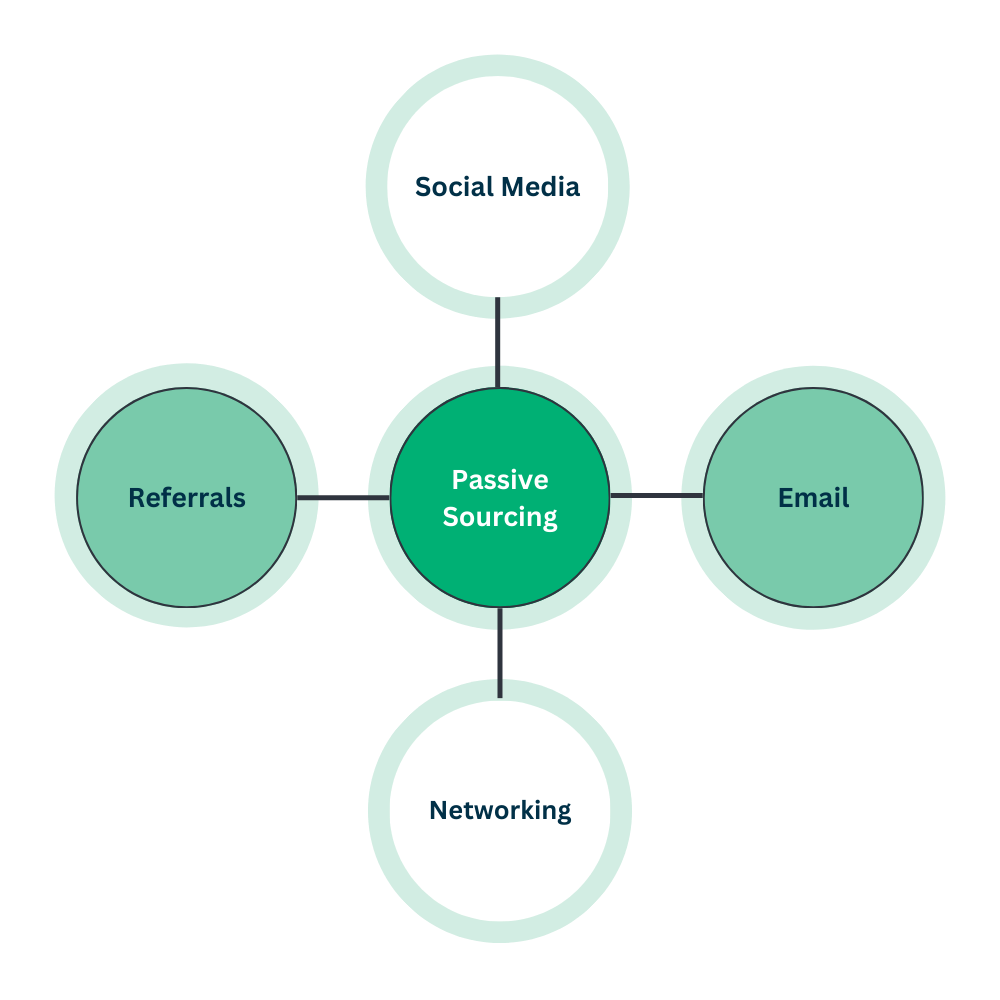When most people think about sourcing, they probably picture active candidates – on job boards, social media platforms, and employee referral programs. But using another route to find top talent — passive sourcing — targets passive candidates.
This approach enables you to expand your pool of potential employees and improve your chances of finding the best possible fit for your company.
This guide discusses the basics of passive sourcing and how you can get started today.
Discover the key to securing top #Talent in today’s hiring market: #PassiveSourcing.
What Is Passive Sourcing?
Passive sourcing refers to the process of reaching out to and engaging with candidates who are not actively looking for new jobs. In some cases, these candidates may be happy with their current roles or unaware that your company exists.
Such passive candidates can be an invaluable source of high-quality talent; after all, they have the proven skills and experience needed to do their jobs well. Reaching these passive candidates, however, will require a different outreach strategy than what you use for active candidates.
Why Is Passive Sourcing Valuable?
For successful recruiting, today’s hiring managers must look outside their active candidate pools. Passive sourcing can help recruiters find and connect with candidates they might have previously overlooked. Passive sourcing is highly valuable for several reasons:
- Expand your candidate pool — by including talent that isn’t actively looking for a new job, you can expand the network you tap into for filling open positions.
- Reach proven, high-quality talent — since these candidates are already happy in their current positions and performing to high standards, you can trust that they are skilled and willing to stick around your company for a longer period of time.
- Improve employee retention rates — by showing you are proactive and invested in the futures of current and potential employees, you can directly increase employee sentiment and retention.
- Less competition = low-stress interactions — because passive candidates are not actively browsing job boards and career sites, your outreach and recruitment won’t have to compete with fierce competition.
Let’s Put It In Perspective: 70% of the global workforce are classified as passive candidates.
It’s time to start tapping into #PassiveSourcing strategies to recruit and hire top talent. See how:
How To Start Passive Sourcing
The first step in creating a passive sourcing strategy is to clearly identify the target candidate. Who are you looking for? What skills and experience do they have?
Once you’ve got a clear picture of who you’re looking for, you can start reaching out to connect with them.
There are a few different ways to do this:

Social Media
Always remain respectful and professional in your social media communications. You want to avoid coming across as spammy or pushy.
The best way to connect on social media is to create a relationship with the candidate first. You can do this by engaging with their posts and following them on different platforms.
Once you’ve established a rapport, you can reach out and invite them to connect.
Email Outreach
Personalizing your emails can help you avoid coming across as generic or spam.
Take the time to introduce yourself, explain your reasons for reaching out, and demonstrate the value you can provide, whether it be resources, advice, or research on the latest trends affecting your industry.
Networking Events
Networking by attending industry events can help you connect with potential future candidates because you’ll meet people within your industry who hold similar interests.
Build those relationships by connecting on social media, exchanging business cards, and staying in touch after the event ends.
Leverage Connections for Referrals
Previous hires or other industry connections enable you to meet passive candidates through a trusted party.
By maintaining strong industry connections, building a strong brand identity, and treating those you recruit with dignity and respect, you earn the trust of people who can testify on your behalf to their respective networks.
Fast Stats:
Passive candidates that are hired are 120% more likely to positively impact your company than active candidates. Compared to standard candidates, passive candidates are also 17% less likely to need skills development when onboarding.
Passive Sourcing With Visage
Following these tips can help you create a successful passive sourcing strategy to identify top talent for your company.
However, using a quality software platform like Visage can further simplify this process by automating logistics, organizing contact information, and streamlining recruiting workflows with our software tools and human sourcers.
Our platform offers the following premium features:
- Automated follow-up
- Robust analytics and reporting
- Compatibility with most existing tech stacks
- Templates for email outreach
- Outreach and candidate comms tracking
… and more.
For more information on how to source and secure passive candidates with our premium software platform, visit visage.jobs!

Director of Sourcing Operations at Visage, Evelyn has experience in agency, RPO, and in-house roles spanning 12 years in the recruitment industry. Evelyn has built and oversees a 4000-member global freelance sourcing community. Every Christmas in Ireland, she enjoys putting up her THREE Christmas trees.


